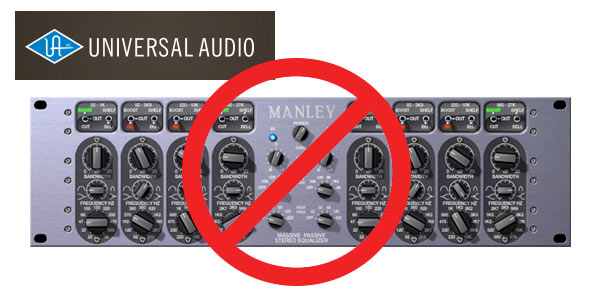If You Can’t Trust Your Tools
So here’s a novel twist on the whole high-resolution audio saga. I spoke to another audio engineer here at the studio today and he happened to mention that he’d been working on an 11.2 surround mix with another very well known surround mixing engineer at a major audio encoding company. Unlike myself, they work on records by the big commercial artists and therefore use a lot of processors and effects to polish their mixes. No big surprise there…if I was lucky enough to work on projects of that type, I’d undoubtedly alter some of my purist tendencies with regard to processing via plug ins.
Plug ins are software “add ons” that studios and audio engineers use to modify digital audio signals. There are literally hundreds perhaps thousands of plug ins available for the ubiquitous Pro Tools digital audio workstations (which by the way are all PCM machines…as are all of the plug ins…nothing here for fans of DSD).
Back in the pre-digital era outboard gear (so called because they were located outside of the main console), signal processors did one thing and were contained in a rack mountable box. If you wanted to access a fancy parametric equalizer or compressor/limiter, you routed your incoming microphone or track to and from the outboard device via the patch bay.
There are three basic types of processors that are categorized by the particular parameter of sound that they alter. There are analog processors that modify the amplitude of a signal (compressors, gates, expanders etc), others that change frequencies (such as EQs, harmonizer, pitch shifters etc) and finally a group that deals with time (reverberation, delay, phase shifting etc).
With the arrival of digital audio workstations, all of this processing is done “inside the box”…meaning there are dedicated DSP chips or ultrafast CPUs that run specialized algorithms that make reverb or limiting or a ton of other previously unimaginable processes possible. Everything that we used to do with a dedicated box has been “modeled” as a plug in… and the digital plug ins are virtually indistinguishable from the rare and usually very expensive analog versions. So now everyone can purchase and have access to a classic Pultec EQ or a Universal Audio LA-2A.
So what happens when a very high profile engineer decides to use a very popular plug in that models a signal processor called a Manley Labs “Massive Passive” equalizer on the main program outputs of his 11.2, high-resolution audio (96 kHz/24-bit) surround mix? You would think that the people at Universal Audio that created the digital plug in version of the tool would be upfront about the specifications of their tool. They claimed that it handles 96 kHz/24-bits just fine. It turns out that they weren’t and finally admitted as much after being pestered by the parties involved.
The box will run at 96 kHz/24-bits but there isn’t sufficient processor power to run the process above 48 kHz so they simply roll off the signal above 24 kHz to run their EQs…without telling anyone!
It wasn’t until the mastering engineer received the file and contacted the original mixing engineer and pointed out that the project wasn’t actually a high-resolution audio production any longer that the investigation began. No one would have every known. The mix was painstakingly done at 96 kHz/24-bits but a single plug in placed at the end of the signal flow polluted the entire signal path…AND the company that made the plug in tried to hide the fact. Thank goodness for spectrum analysis.
Who knows how many other digital tools are out there from Universal Audio or others that aren’t actually measuring up to their brochure stated specs? My mind races back to the DXD investigation that I did some many weeks back that indicated that there was suspicious amounts of DSD-like ultrasonic noise on what should have been a clean track.
When you can’t trust your tools, you can’t deliver honest masters.


NEW GOVERNMENT AGENCY may be needed to address Dr. Marks legitimate concern about the honesty of the recorded audio industry. I’m usually not one to want the government butting in, but it seems clear the recording industry is a bit low on morals when it comes to describing the often tortuous path the signal has endured since coming off the strings of the violin.
This new, Agency for Digital Integrity ( ___ insert your name of choice), would be responsible for establishing a coding system to be attached digitally and physically (where possible) to each file or disk charting the digital compression used each and every time the file was moved or altered. This “pedigree” would let buyers know what process was used and would be free of any adjectives. Honest information would, as it always does, allow the market place to work, weeding out dishonest, or incompetent suppliers of music.
Thanks for posting this.
Would you mind clarifying a few things? I’m about to start a new project and I’m considering trying 96K for the first time, so this caught my eye.
1. What UAD hardware was used (i.e. would more UAD hardware processing (octo, etc.) help)?
2. Does this limitation (rolling off everything above 24K) happen only on 11.2 surround mixes, or would it happen on a stereo, 24/96 file?
3. Does this problem exist with any other UAD plugins?
This was the UAD plug in that models the Manley Massive Passive EQ. There’s just not enough processing power to handle anything above 48 kHz. I haven’t tried it myself.
OK, thanks.